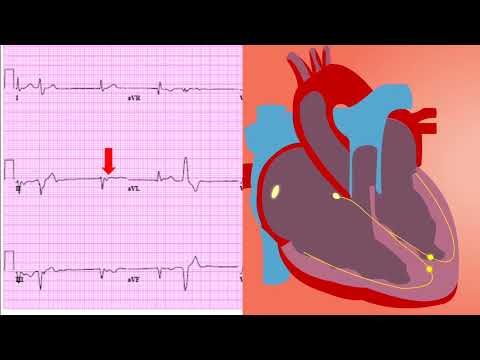🎬 Video Summary
This video provides a comprehensive overview of atrial fibrillation (AFib), covering its essential clinical aspects and characteristic ECG features. Understand how to identify AFib on an ECG and learn about current treatment options. Whether you’re a medical student or a healthcare professional, this video is a valuable resource for understanding atrial fibrillation.
🧠Teaching Pearls
- 💡 Learn to recognize the irregular R-R intervals, a hallmark of atrial fibrillation on ECG.
- 💡 Understand the absence of distinct P-waves in atrial fibrillation.
- 💡 Grasp the clinical significance of atrial fibrillation, including stroke risk.
- 💡 Explore various treatment approaches for atrial fibrillation, including rate and rhythm control.
- 💡 Learn to differentiate atrial fibrillation from other arrhythmias based on ECG findings.
⏱ Timestamps
❓ Frequently Asked Questions
Q: What are the main causes of atrial fibrillation?
A: Atrial fibrillation can be caused by various factors including high blood pressure, heart valve problems, coronary artery disease, thyroid disorders, and excessive alcohol consumption. Sometimes, the cause is unknown.
Q: How is atrial fibrillation diagnosed?
A: Atrial fibrillation is primarily diagnosed using an electrocardiogram (ECG), which records the electrical activity of the heart. The irregular heart rhythm and absence of P-waves are key indicators.
Q: What are the potential complications of atrial fibrillation?
A: The most significant complication of atrial fibrillation is an increased risk of stroke due to the formation of blood clots in the heart. Other complications include heart failure and reduced quality of life.
Q: What are the different treatment options for atrial fibrillation?
A: Treatment options for atrial fibrillation include medications to control heart rate (rate control) or restore normal heart rhythm (rhythm control), as well as procedures like cardioversion and catheter ablation.
Q: Can atrial fibrillation be cured?
A: While atrial fibrillation cannot always be cured, various treatments can effectively manage the condition and reduce the risk of complications. Catheter ablation offers the potential for long-term rhythm control in some patients.
Q: What lifestyle changes can help manage atrial fibrillation?
A: Lifestyle changes that can help manage atrial fibrillation include maintaining a healthy weight, managing blood pressure and cholesterol, avoiding excessive alcohol and caffeine, and quitting smoking.
🧠 Key Takeaways
- 💡 Atrial fibrillation is characterized by an irregular heart rhythm and the absence of P-waves on ECG.
- 💡 Effective management of atrial fibrillation aims to control heart rate, reduce stroke risk, and improve quality of life.
- 💡 Treatment options range from medications to procedures, tailored to individual patient needs and risk factors.
- 💡 Understanding the underlying causes and potential complications is crucial for effective management.
- 💡 ECG interpretation skills are essential for accurate diagnosis of atrial fibrillation.
🔍 SEO Keywords
Atrial Fibrillation, AFib, ECG Interpretation, Arrhythmia, Heart Rhythm, Cardiology, AFib Treatment.
“`

